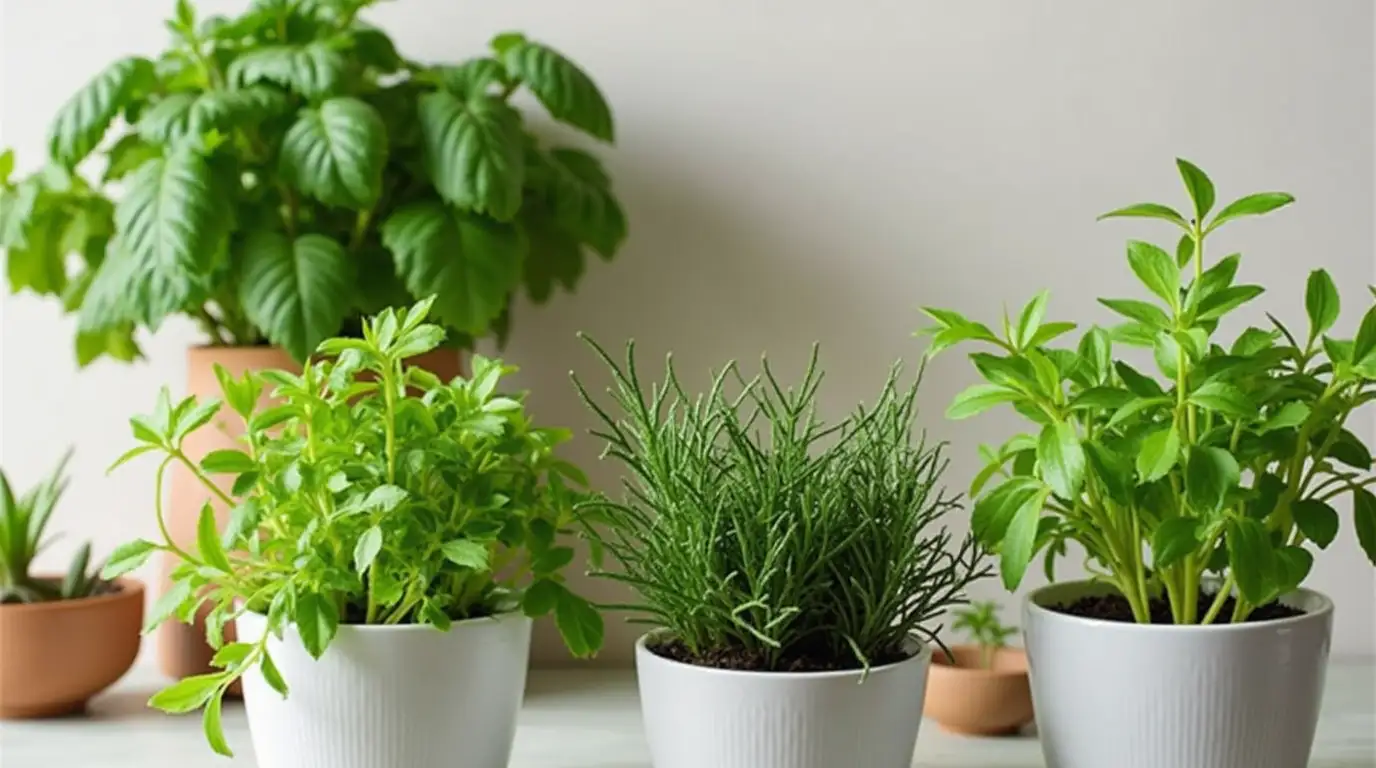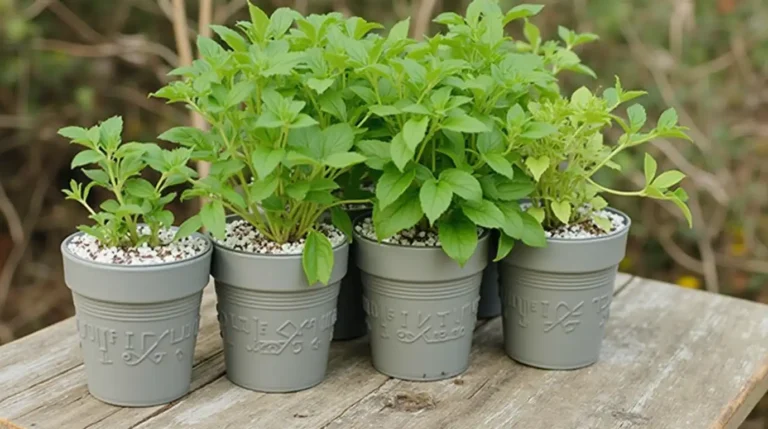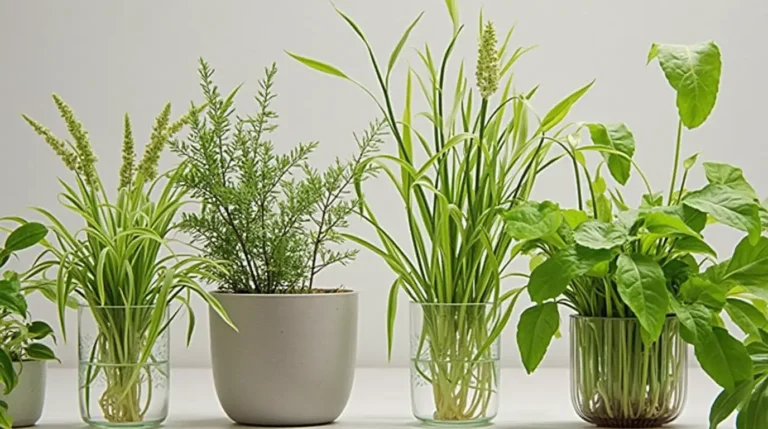Best Small Containers for Growing Herbs in Tiny Spaces
Introduction
Table of Contents
ToggleHerb gardening in small spaces can be a challenge, but with the right approach, it’s entirely possible to create a thriving garden in the most confined areas. Whether you live in a tiny apartment, a cozy house with limited yard space, or a city with minimal outdoor room, best small containers for herbs are a game-changer. These containers allow you to grow fresh herbs for cooking, medicinal use, or aesthetic purposes, all without sacrificing precious space.
Choosing the right small herb containers can transform your gardening experience. A well-chosen container enhances plant growth, improves aesthetics, and makes maintenance easier. These containers adapt to any space, whether it’s a kitchen window sill, balcony, or urban rooftop. Understanding the best container options, materials, and designs will help you create a beautiful and productive herb garden, even in the smallest of spaces.
Understanding the Challenges of Growing Herbs in Small Spaces
Maximizing Limited Space
One of the biggest challenges of growing herbs in tiny spaces is the lack of available room for traditional garden beds or large pots. However, this limitation doesn’t mean you can’t have a thriving herb garden. The key is to be strategic with your container selection and garden layout. By using best small containers for herbs, you can efficiently utilize the space you have, whether it’s on a windowsill, a balcony railing, or even a narrow kitchen shelf.
Vertical vs. Horizontal Gardening
Maximizing vertical and horizontal space is essential for effective herb gardening in confined areas. Vertical gardening, such as using wall-mounted planters, tiered shelving, or hanging baskets, helps you grow more herbs without taking up valuable counter or floor space. Horizontal gardening, on the other hand, focuses on compact pots and containers that fit into narrow spaces, making them ideal for balconies or small patios.
The best small herb containers for vertical gardening include wall planters and stackable pots, while rectangular or square containers work well for horizontal setups. By combining both techniques, you can maximize your herb yield without overcrowding your living space.
Choosing the Right Size and Shape for Your Herb Container
Finding the Perfect Size
The size of your container plays a crucial role in your herb garden’s success. The best small containers for herbs should provide enough space for the roots to grow while remaining compact enough to fit in small areas. Herbs like basil, cilantro, and parsley require slightly larger containers, while thyme, oregano, and chives can thrive in smaller pots.
If your space is extremely limited, consider multi-pocket containers or stackable planters that allow you to grow multiple herbs in one unit. These containers are not only space-efficient but also help create a lush and layered look in your garden.
Container Shape Matters
The shape of your container also affects plant growth and space efficiency. Round containers are great for herbs that need more room to spread, such as basil or mint. Square and rectangular containers, however, allow you to line up multiple plants neatly along a wall or window sill, making them ideal for structured and organized small-space gardens.
For an efficient use of space, opt for compact small herb containers that can be arranged to maximize every inch of your growing area. This approach ensures that your herbs have enough room to develop while keeping your space tidy and functional.
Best Materials for Small Herb Containers
Plastic vs. Ceramic vs. Clay
The material of your container directly impacts how well your herbs will grow. Plastic containers are lightweight, affordable, and come in various sizes and shapes, making them a popular choice. However, they are not as breathable as other materials, which can lead to overwatering and root rot.
Ceramic and clay containers, on the other hand, provide excellent breathability, allowing moisture to evaporate more effectively and reducing the risk of overwatering. They are particularly beneficial for herbs like rosemary and thyme, which thrive in well-drained conditions. The downside is that they can be heavier and more fragile compared to plastic options.
Wooden containers are another great option, especially for rustic-style gardens. They are breathable and help regulate moisture, but they require regular maintenance to prevent rot. Ultimately, the best small containers for herbs will depend on your needs, the herbs you plan to grow, and the environment they will be placed in.
Top 5 Best Small Containers for Herbs
Space-saving Pots – These compact yet spacious pots allow roots to develop while fitting into small spaces. They work well for indoor and outdoor herb gardening.
Vertical Planters – Ideal for small balconies or windowsills, vertical planters help maximize space by growing herbs upward.
Hanging Baskets – Utilizing unused vertical space, hanging baskets provide easy access to herbs while keeping them off counters and floors.
Window Boxes – A perfect solution for urban gardeners, window boxes provide a sunny spot for herbs without taking up extra space.
Self-watering Containers – These innovative containers help maintain consistent moisture levels, making them ideal for busy gardeners.
How to Maximize Space with Creative Container Ideas
Repurposing Everyday Items
You don’t need to buy expensive containers to create a beautiful herb garden. Many everyday household items can be repurposed into unique and functional small herb containers. Mason jars, old teacups, and tin cans make excellent mini herb planters, adding a charming and rustic touch to your space.
Stackable Planters for Space Efficiency
Stackable planters are a great way to grow multiple herbs in a limited space. These containers are designed to be layered, allowing for vertical growth without taking up too much surface area. They are among the best small containers for herbs, particularly for urban gardeners with minimal room.
Herbs That Thrive in Small Containers
Some herbs are naturally better suited for small-space gardening. The best herbs for small containers include:
Basil, mint, parsley, and thyme – Thrive in confined spaces due to their relatively shallow root systems.
Chives, oregano, and cilantro – Perfect for vertical gardens and compact planters.
By selecting the right herbs, you can ensure a successful and manageable herb garden in even the smallest of spaces.
Drainage: A Must-Have for Healthy Herbs in Small Containers
Ensuring Proper Drainage
Proper drainage is crucial for healthy herbs. Without adequate drainage, excess water can accumulate, leading to root rot and poor plant growth. The best small containers for herbs come with pre-drilled drainage holes, but if yours don’t, you can add a layer of gravel or drill holes yourself to improve water flow.
Tips for Caring for Herbs in Small Containers
Watering and Fertilizing
Since small containers dry out quickly, regular watering is essential. However, overwatering should be avoided, as excess moisture can lead to root rot. Fertilizing every few weeks with an organic, balanced fertilizer ensures that your herbs receive the nutrients they need to thrive.
Pruning and Maintenance
Pruning your herbs regularly promotes healthy growth and prevents overcrowding. Pinching off dead leaves and trimming stems encourages new growth, ensuring that your plants remain productive throughout the growing season.
Conclusion
With the right best small containers for herbs, anyone can enjoy fresh, homegrown herbs, regardless of space constraints. Whether using vertical planters, window boxes, or repurposed DIY containers, you can create a thriving, space-saving herb garden effortlessly. By selecting the right container material, size, and design, you can maximize your gardening potential and enjoy the benefits of fresh herbs all year round.
For more great gardening accessories for your balcony,visit this link




